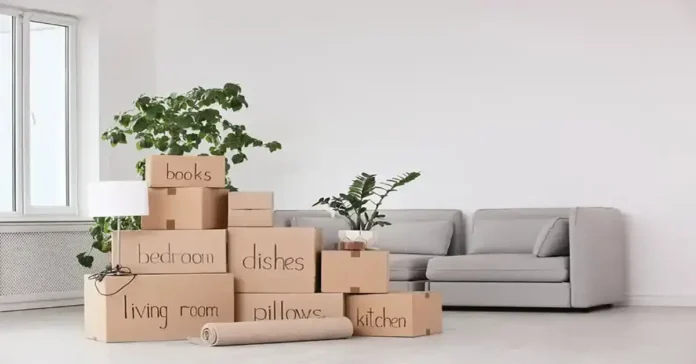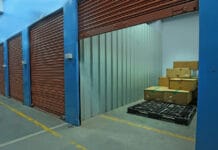In today’s dynamic living spaces, efficient storage solutions play an important role in maintaining a clutter-free and organized environment. Whether you’re looking for limited storage space, undergoing a renovation project, or simply aiming to declutter and optimize your living areas, these tips are designed to help you make the most of your furniture storage. Explore creative ways to maximize vertical and underutilized spaces, such as utilizing wall-mounted shelves or opting for multi-functional furniture with built-in storage compartments.
Box storage techniques are another valuable asset in your storage arsenal. Utilize sturdy boxes, bins, and baskets to categorize and store items based on frequency of use and accessibility. Labeling these containers can further streamline your storage system, making it easier to locate items when needed.
Furthermore, integrating decluttering practices into your storage routine is essential for maintaining an organized living space. Regularly assess and purge items that are no longer needed or used, freeing up valuable storage space and preventing unnecessary clutter accumulation. Optimize furniture arrangements to create open, spacious pathways and maximize functional storage areas.
Furniture Storage Tips & Methods
Optimize your space with smart storage solutions like vertical storage, luggage storage facility, and decluttering strategies. Efficiently arrange furniture to create open pathways and maximize functionality. Labeling and categorizing items enhances accessibility. Regularly assess and purge unused items to prevent clutter buildup. Utilize multi-functional furniture with built-in storage options. Incorporate these tips into your daily routine for a more organized and harmonious living space.
1. Clean the dirty and unkempt furniture
Before you decide to put to preserve your furniture in a storage unit, make sure to check for any repairs. Clean the furniture; it is always better to store clean furniture to prevent further decay. You can adapt the following tips to clean the furniture before placing it within the storage unit and reduce the chances of destroying your beloved pieces:
- For wooden or plastic furniture, use mild soap and water. For the wooden parts, you could also use a wood cleaner, to protect the finish of the wood.
- The fabric items like sofa sets and couches should be cleaned with a fabric or upholstery cleaner. You must also ensure that they are completely dry before you pack them.
- Polish the metal sections using a polishing cloth and metal cleaner. Polishing will remove any existing oxidation and delay the process of tarnishing.
2. Disassemble the furniture
Before moving your furniture into the storage unit, disassemble everything that you can. The desks, tables, bookshelves, and all other furniture that has detachable parts, must be dismantled. Put the screws, wrenches, and other small items in a labeled bag. Being organized in such a manner, it will ease the packing process for moving, and it will save space and create ease when reassembling your furniture. Besides, it will reduce the likelihood of breaking and scratching the furniture.
Also, plastic is your friend in this process. Lining the storage room with thick plastic sheets can help protect both the furniture and the floor. It also would make it easier for you to drag the furniture from one place to the other, without spoiling it. Another option can be termite treated wooden pallets. Arranging your furniture on a raised space ensures that it will remain clean and pest free.
3. Find out your storage options
Storing your furniture in a self-storage unit can be an expensive affair. Investigate your options thoroughly. Factor in the various elements like the term for which you want to preserve your furniture. Do you want it to store your belongings for the long-term or do you want to sell the furniture and keep it in a unit for a short term period? The length of time for storing your goods is vital to know beforehand because the average cost of a storage unit varies. It is generally recommended to opt for a self-storage unit when you’re going through a transactional period, like shifting to your new home, renovating it, or downsizing.
4. Opt for a clean self-storage unit
In case you are in it for the long-haul, the protection of the furniture is paramount. Then it also becomes imperative to make sure that the storage unit has facilities like pest control, cleanliness, and security systems. Ensuring the storage facility sprays for pests means that your furniture is safeguarded against termites and bugs.
5. Stack carefully
When you preserve your furniture, it is always a best practice to exercise extra care and start stacking based on the height and weight of the furniture. Try to avoid balancing pieces one on top of the other. The precarious arrangement of furniture increases the chances of falling and breaking off pieces. If you must stack them, the heavier items should be at the bottom, and the lighter ones should lie above. However, do not make the stacks too high.
To provide an added level of security, you could wrap the most critical and valuable items in padding and soft quilts to protect them from damage. Sometimes, the sharp edges of some pieces might break or scratch other fragile items. It is, therefore, a good idea to safeguard fragile items by placing padding around the corners of objects that stick out.
6. Provide additional safety for fragile items
It is recommended to store fragile items like TV, kitchen appliances, and computers in their original boxes. The things that have a glass or mirrored surface must be highlighted and packed as “Fragile” or “Handle with Care” to help identify the pieces during transportation and unpacking.
Try to pack methodically and make optimum use of the boxes. Make the space clean and decluttered to protect the furniture. If you try to cram more into a small space, you increase the risk of knocking things over, scratching and causing other damage.
7. Security is the key
After you have put the furniture in a storage unit, make sure to have a secure lock on it. The storage unit that you chose must be in a safe area and must exercise the necessary safety measures.
Storing your unused and extra furniture does not have to be stressful or complicated. Make sure to pick out and appropriately sized self-storage unit for your furniture. For the rest, you can follow our guide, and we promise that the process would be a cakewalk!
Final Words on Furniture Storage Tips
In conclusion, adopting effective furniture storage tips is crucial for achieving efficient living spaces. By implementing these strategies, you can optimize storage capacity, maintain organization, and create a clutter-free environment that enhances your daily life. Efficient furniture storage promotes streamlined routines, allowing you to easily access and manage your belongings. This not only saves time but also reduces stress and frustration associated with cluttered spaces.
Additionally, these tips contribute to a visually appealing and harmonious living space. Properly stored furniture enhances the aesthetic appeal of your home while maximizing functionality. Moreover, efficient furniture storage supports sustainable living by encouraging mindful consumption and responsible disposal of unwanted items. This promotes a more eco-friendly lifestyle and reduces waste.
FAQs
A1: You can use multifunctional furniture pieces like ottomans with hidden storage or wall-mounted shelves to maximize storage in a small home.
A2: Wrap wooden furniture in blankets or furniture covers to protect it from dust and scratches while in storage.
A3: Clean upholstered furniture thoroughly before storage and cover it with breathable fabric to prevent moisture buildup and mildew.
A4: It’s best to avoid storing furniture in areas with extreme temperature fluctuations or high humidity levels, such as garages or outdoor sheds.
A5: Store antique furniture in climate-controlled storage units to prevent damage from temperature and humidity fluctuations.
A6: Use mattress covers and disassemble beds if possible before storing them to save space and prevent damage.
A7: Avoid stacking heavy furniture pieces on top of each other to prevent damage and make it easier to access items in storage.
A8: Use breathable materials like cotton or canvas covers instead of plastic to prevent moisture buildup and mold growth.
A9: Clean and dry seasonal furniture before storing it in a covered area or climate-controlled storage unit to prevent damage from weather exposure.
A10: Check on furniture in long-term storage periodically to ensure it remains in good condition and make any necessary adjustments to storage arrangements.







